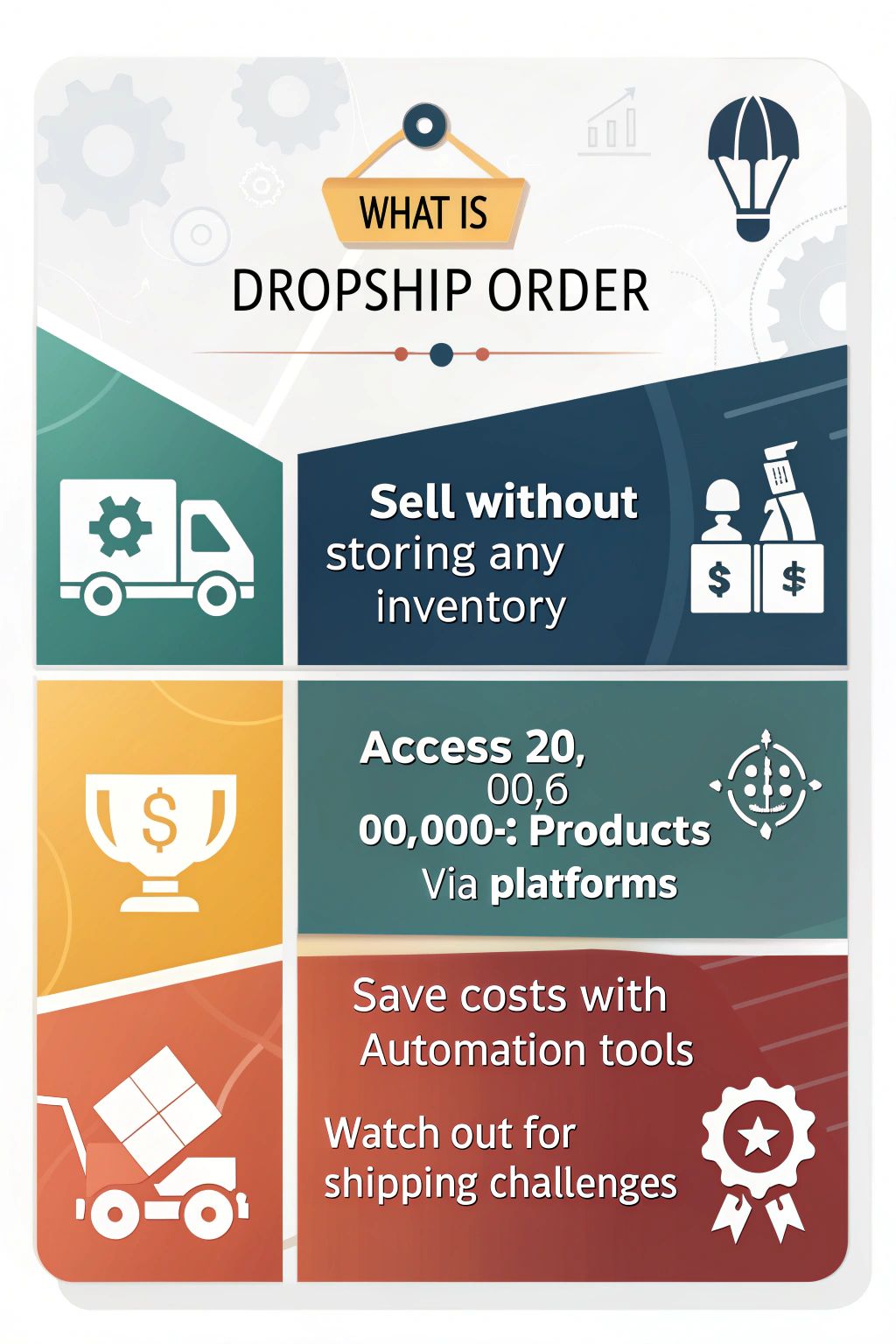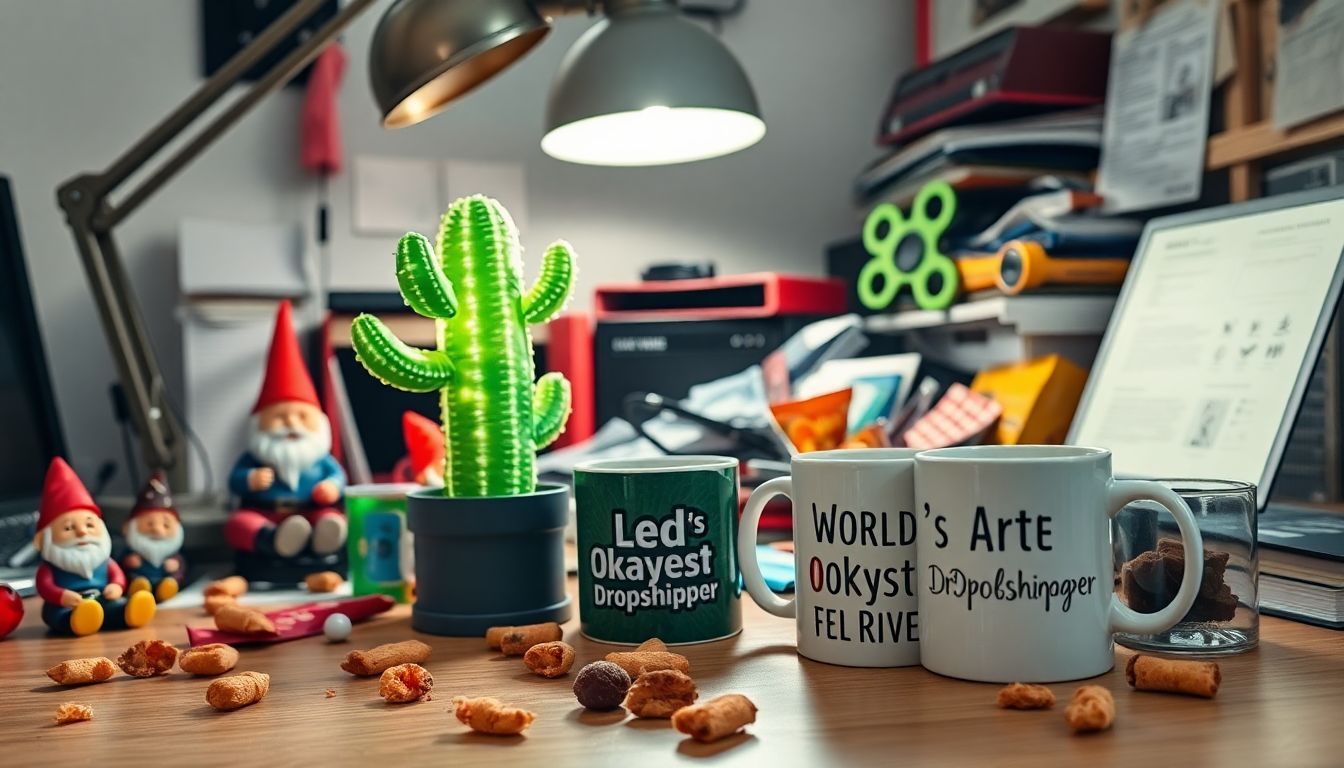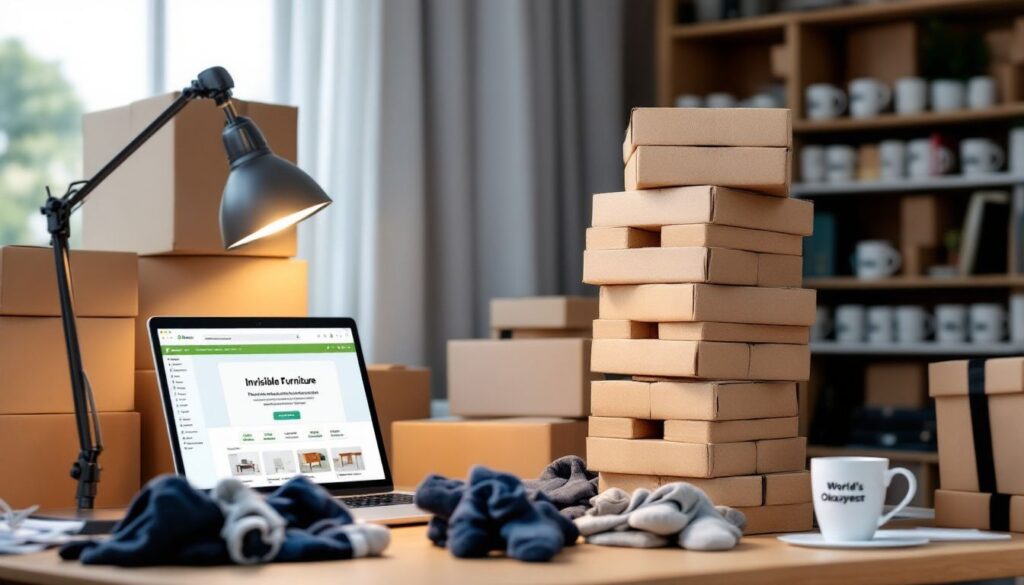Running an online store can be tough. Many sellers struggle with keeping products in stock, managing shipping, or spending too much money upfront. These challenges often stop people from growing their businesses.
Dropshipping is a simple solution to these issues. Sellers don’t need to manage inventory or handle shipping directly. This blog explains what a dropship order is and how it works step by step.
Keep reading—it’s easier than you think!
Key Takeaways
- A dropship order allows sellers to list and sell products without keeping inventory. Suppliers ship items directly to customers after an order is made.
- Platforms like SmokeDrop offer access to over 20,000 smoke shop products with no minimum orders, helping small businesses start easily.
- Dropshipping reduces upfront costs since sellers don’t need storage or bulk buying. Automation tools save time by syncing tracking numbers and managing fulfillment.
- Main challenges include low profit margins, longer shipping times, and dependence on supplier performance for quality and delivery speed.
- Alternatives like Fulfillment by Amazon (FBA), creating branded products, or affiliate marketing provide other ways to run online businesses effectively.

What Is a Dropship Order?

A dropship order happens when a retailer sells products without keeping them in stock. Instead, the supplier ships items straight to the customer after an order is made. Retailers control pricing and manage orders using dropshipping platforms like Shopify or WooCommerce.
This method lets retailers offer many options, from smoke products to accessories, without needing large storage spaces. Suppliers handle inventory and shipping, making it easier for sellers to focus on growing their business.
Learn how this process works next!
How Does a Dropship Order Work?
A dropship order moves through a simple process. Sellers list products online, and suppliers handle the shipping.
Partnering with a supplier
Partnering with a supplier is key to successful dropshipping. A good supplier offers quality products and reliable shipping. For example, SmokeDrop provides access to over 20,000 smoke shop products.
Retailers can buy wholesale without worrying about minimum orders. This adds more flexibility for smaller businesses.
Automation simplifies the process even further. Suppliers like SmokeDrop handle order fulfillment automatically. They sync tracking numbers and integrate with platforms like Shopify or WooCommerce.
It saves time and reduces errors for sellers managing their online stores daily.
Setting up an online store
An online store needs a reliable platform. Shopify, WooCommerce, and BigCommerce are great options. These integrate smoothly with tools like SmokeDrop for dropshipping. Sellers can manage product catalogs, pricing, and order processing easily.
Adding over 20,000 smoke products via SmokeDrop expands the product variety. No inventory is needed because orders are automated. Tracking numbers make shipping logistics simple for sellers to monitor orders efficiently.
Receiving customer orders
After setting up an online store, receiving customer orders becomes the next step. Integrated e-commerce platforms simplify this process. Retailers can use tools like SmokeDrop for efficient customer order management.
This includes tracking numbers being assigned automatically to ensure transparency in updates.
Accurate syncing helps align orders between suppliers, retailers, and customers. Automated processes speed up order handling, reducing errors. These features support quick and transparent fulfillment while making it easy to manage incoming purchases from start to finish.
Forwarding orders to the supplier
The customer’s order is sent directly to the supplier. This process is fast and seamless in most dropshipping systems. Clear supplier communication ensures accurate order details like size, color, or quantity.
Suppliers start processing as soon as they get the order. Automated tools make forwarding easier by syncing online stores with suppliers’ systems. Smooth order processing reduces delays and speeds up fulfillment time.
Supplier handling product fulfillment
The supplier takes over once they receive the forwarded order. They pack and ship the product directly to the customer. SmokeDrop automates this process, making order processing faster and error-free.
Automatic order fulfillment ensures quick shipping. Suppliers provide tracking numbers for each shipment. This adds reliability and transparency for sellers and customers. Retailers can monitor inventory and orders easily through systems like SmokeDrop, streamlining fulfillment without managing physical stock themselves.
Key Players in Dropshipping
Three main players keep dropshipping running smoothly. Each has a vital role in making the process work.
The seller
The seller acts as the face of the business. They build an online store using e-commerce platforms like Shopify, WooCommerce, or BigCommerce to showcase products. SmokeDrop helps sellers by offering over 20,000 smoke shop products for their stores.
Sellers focus on marketing and attracting customers without holding inventory themselves.
Sellers rely on automatic order fulfillment systems to simplify tasks. Platforms like SmokeDrop sync tracking numbers to ensure smooth order updates. This boosts customer trust and keeps operations efficient.
Small businesses benefit from low upfront costs since there’s no need for minimum wholesale purchasing requirements.
The supplier
Suppliers play a big role in dropshipping. They handle products, store inventory, and ship orders. Good suppliers make the process smooth by offering fast shipping and quality items.
SmokeDrop stands out with over 20,000 vape and smoke shop products. It supports platforms like Shopify and WooCommerce for easy retail integration.
Reliable suppliers use tools like synchronized tracking to keep everything updated automatically. SmokeDrop simplifies tasks with automated order fulfillment—saving time for sellers.
Plus, there are no minimum orders required for wholesale purchasing, making it flexible for small businesses or large-scale operations alike!
The customer
The customer benefits the most from a dropshipping model when speed and transparency are prioritized. With platforms like SmokeDrop, they enjoy flexible purchasing options, thanks to no minimum order requirements for wholesale goods.
This ensures customers can buy what they need without restrictions.
Automatic order fulfillment improves their experience by offering quick processing and clear updates at every step. Customers also gain access to over 20,000 unique products through online retail stores using dropshipping platforms.
These features ensure customer satisfaction remains high throughout the process.
Benefits of Dropship Orders
Dropship orders make starting an online store easier and less risky—perfect for anyone looking to grow a business.
Low upfront costs
Starting a dropshipping business is cost-effective. Sellers don’t need to buy products in bulk upfront. SmokeDrop allows sales with no minimum order requirement, making it easy for beginners.
Fully automated tools save money by cutting inventory and fulfillment costs.
Platforms like Shopify and WooCommerce help reduce expenses. Retailers can list over 20,000 products without paying large initial fees. Automatic order processing and synced tracking numbers lower shipping and service costs even further.
This keeps the budget low while running operations smoothly.
Wide product variety
Dropshipping offers access to a huge range of products. SmokeDrop, for example, provides over 20,000 smoke shop items. These include vape accessories, CBD merchandise, and water pipe products.
Retailers can choose from many brands like Afghan Hemp and High Times.
Suppliers allow wholesale buying with no minimum order. This gives sellers flexibility to stock diverse product selections without keeping inventory. It’s easy to explore many niches or cater to different customer preferences this way.
No inventory management
Dropshippers don’t need to buy or store products. The supplier handles all inventory management. Retailers save time by skipping storage tasks. Tools like SmokeDrop make this even easier with automatic updates.
Products stay available without manual checks.
Tracking is simple and clear for everyone involved. Synced tracking numbers keep buyers informed about their orders. This process eliminates confusion and extra work for sellers, making order fulfillment smooth and hassle-free.
Flexible location for sellers
No inventory means sellers can work from anywhere. SmokeDrop’s automated dropshipping makes it easy to manage orders remotely. With platforms like Shopify and WooCommerce, sellers can handle their stores without being tied to one spot.
Wholesale buying with no minimum order adds freedom too. Sellers don’t need big upfront costs or storage space. Flexible sourcing allows them to sell products while living in different locations or traveling.
Geographically flexible operations make remote dropshipping seamless for eCommerce businesses.
Scalable business model
Fully automated dropshipping helps sellers scale quickly. It streamlines tasks like order processing and inventory control. Sellers can offer over 20,000 smoke products without keeping stock.
Platforms like Shopify and WooCommerce make expansion easier by integrating new sales channels effortlessly.
Fast shipping paired with healthy profit margins drives steady growth. Wholesale purchasing with no minimum orders allows flexibility for retailers to scale up when needed. Managing pricing across platforms becomes seamless, supporting larger operations without extra effort.
Challenges of Dropship Orders
Dropship orders come with hurdles like slim profits and supplier delays—read on to uncover smart ways to handle these challenges!
Low profit margins
Competition squeezes profits in dropshipping. Many sellers lower prices to attract buyers, hurting profitability. Smoke products often show very thin profit margins due to market saturation.
Shipping costs also cut into earnings. Sellers don’t control pricing well since suppliers set wholesale rates. While faster shipping boosts sales, it rarely increases profits. Automated systems can help reduce operational costs and improve margins slightly, but challenges remain for many retailers.
Dependence on supplier performance
Dropshipping depends heavily on supplier performance. Suppliers must handle fast shipping and efficient order fulfillment to meet customer needs. Delays or mistakes can harm sales and lower trust.
Tracking numbers from suppliers also add transparency, ensuring smooth operations.
Retailers rely on suppliers for inventory management solutions and timely delivery. Errors in stock updates or pricing can cause problems like canceled orders. Tools like SmokeDrop help by integrating supplier performance into stores seamlessly, reducing risks of issues.
Longer shipping times
Relying on third-party suppliers often causes longer shipping times. These suppliers handle order fulfillment, but coordinating logistics across multiple locations slows delivery. Shipping delays can frustrate customers and hurt sales.
Retailers can use automatic order processing to speed things up. Syncing tracking numbers improves transparency. Still, proper inventory management is needed to reduce problems with delayed shipments.
Clear communication helps avoid customer dissatisfaction, leading smoothly into other challenges like service issues.
Handling customer service issues
Long shipping times often lead to customer complaints. Tools like SmokeDrop help reduce these issues by automating order fulfillment. Tracking numbers sync between suppliers, retailers, and customers.
This keeps everyone informed and lowers confusion during delays.
Retailers can manage inventory and orders easily through a user-friendly interface. This reduces mistakes that could cause problems for buyers. With access to brand details in SmokeDrop, sellers provide accurate product information when handling inquiries or concerns.
Offering demos also helps retailers learn the system better, leading to fewer service-related errors later on.
Understanding Dropship Processing
Dropship processing uses automated systems to handle orders fast. Platforms like SmokeDrop sync with Shopify and WooCommerce, making order management smooth. Orders from customers go directly to suppliers for fulfillment without manual work.
SmokeDrop offers over 20,000 smoke shop products like vape items and water pipes. Wholesale buying has no minimum requirements, giving stores more freedom. Tracking numbers get synced automatically for better transparency.
Retailers can boost their earnings by using these tools efficiently.
How to Choose the Right Dropshipping Supplier
Picking the best dropshipping supplier can boost your business success—let’s explore how to make smart choices.
Evaluating product quality
Check the supplier’s product standards before partnering. Look for clear photos, detailed descriptions, and quality reviews. Test samples to ensure consistency and durability.
Find suppliers with reliable sourcing practices. High-quality products keep customers happy and boost trust in your store. Next is checking shipping reliability.
Checking shipping reliability
Shipping reliability depends on how well suppliers handle orders. Automatic order fulfillment ensures fast and accurate processing. Suppliers that sync tracking numbers with retailers and customers increase transparency.
This makes it easy to see shipping updates at every step.
Reliable shipping also ties to inventory management. Some platforms, like SmokeDrop, let retailers manage orders directly. Flexible options with no minimum wholesale purchasing make adapting easier if problems arise.
Choose suppliers who prioritize clear communication about delivery times and stock levels.
Assessing costs and fees
Finding the right supplier includes checking costs closely. Fees like membership charges or per-order fees can add up fast. Sellers should also check product prices to ensure they leave room for profit after expenses.
Shipping costs are another big factor. Some suppliers offer flat rates, while others charge by location or package size. These fees directly affect overall pricing and profits, so sellers need to analyze them carefully before choosing a partner.
Researching supplier reputation
Check supplier reviews online. Look for feedback from other dropshippers. A supplier with bad reviews can hurt your business. Test their service by ordering a sample product. This shows shipping speed and item quality.
Look at their history in the market. Stable suppliers have been around longer. Reliable companies reply quickly to questions and solve problems fast. Avoid ones with poor communication or late deliveries often noted in complaints online.
Alternatives to Dropshipping
Sometimes, dropshipping isn’t the perfect fit for everyone. There are other ways to run an online business that might suit different goals or needs.
Fulfillment by Amazon (FBA)
FBA lets sellers store products in Amazon’s warehouses. Amazon handles shipping, returns, and customer service for these items. Sellers pay storage and fulfillment fees but save time on logistics.
It works well for those wanting fast shipping without managing inventory themselves. FBA also connects sellers to millions of Prime customers who prefer quick delivery options.
Creating branded products
FBA focuses on storing and shipping items, but branded products bring full ownership. Sellers can use private labeling or white labeling to stand out. With private labeling, businesses source generic goods and add their own logos or packaging.
White labeling offers pre-made products that only need the seller’s branding.
Product sourcing is key here. Sellers often work with manufacturing partnerships for unique designs or use direct manufacturing to create custom products. Some choose in-house production for complete control over quality.
Others explore licensing agreements or brand collaborations to secure exclusive rights to popular items.
Affiliate marketing
Creating branded products gives sellers control over their offerings. Affiliate marketing, on the other hand, is about earning commissions by promoting others’ products or services online.
Sellers join affiliate programs through networks like Amazon Associates or ShareASale.
They receive unique links to share with their audience. Each sale made through these links earns a commission—often 5% to 10%. It’s a low-risk option because there’s no inventory needed.
This model works well for bloggers, YouTubers, and even dropshippers looking for extra income streams.
Conclusion
Dropship orders are simple yet powerful for online sellers. They cut costs, reduce risks, and make selling easier. Sellers don’t need to stock items or handle shipping. Choosing good suppliers ensures smooth sales and happy customers.
With effort and the right strategy, dropshipping can lead to big success!
FAQs
1. What is a dropship order?
A dropship order is when a store sells a product, but another supplier ships it directly to the customer. The store doesn’t keep the items in stock.
2. How does dropshipping work?
You sell products online, and when someone orders, your supplier handles packaging and shipping. You’re like the middleman—no warehouse needed!
3. Why do businesses use dropshipping?
It’s simple: no inventory costs! Businesses can sell many items without needing storage space or upfront investment in stock.
4. Are there downsides to using dropshipping?
Yes, you have less control over shipping speed and product quality since suppliers handle those parts. It’s important to pick reliable suppliers!




